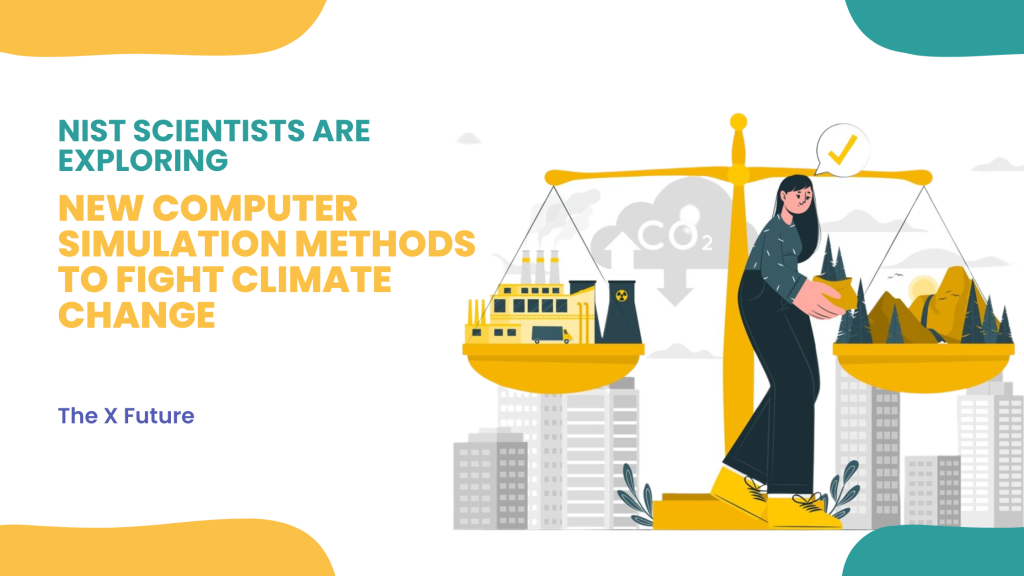Climate change has been discussed for decades now, but it appears that its devastating effects have begun impacting us much sooner than what was predicted. With an increasing number of forest fires, floods, cloud bursts, heat waves, and temperature variations- the planet is surely facing ‘manmade’ heat. Amid the ongoing efforts to battle climate change, scientists at NIST, USA, have come up with a promising solution to accelerate our fight against climate change. They are exploring the use of new computer simulation methods for understanding the behavior of materials that can capture carbon from the atmosphere.
Also known as “direct air capture,” the current technology employed to extract carbon particles from the carbon dioxide in the atmosphere isn’t sustainable for worldwide implementation. But this development promises to make direct air capture economically viable and environment-friendly at the same time. Let’s know more about new age computer simulation-driven material analysis at NIST:
Currently, one-third of the carbon dioxide in the atmosphere is a direct result of human activities, and it is contributing to not only global warming but also a plethora of other ecological problems. Scientists devised direct air capture technologies in a bid to extract the carbon from the air using chemicals that trap ‘carbon’ by passing air through a chemical solution. However, the existing processes are either too cost-intensive or energy-intensive, leaving them unfit for mass adoption. Thus, it is necessary for us to come up with alternative materials which allow us to capture carbon with lesser energy usage at an economical cost. While we can use renewable energy for the direct air capture processes to make them carbon neutral, finding new materials that enable carbon extraction is extremely difficult.
NIST scientists found that the current approach to testing new materials is very time-consuming- synthesizing and testing new materials in laboratories is less likely to help us within the required period of time. Instead, leveraging better computer simulations will help us discover new materials at a much faster rate, finds Vincent Shen, the chemical engineer at NIST. These models use statistical methods in combination with physics to understand the mutual dynamics of carbon capture materials and carbon atoms. Scientists are able to understand how carbon atoms behave with different material geometries, like being attracted towards voids, diffusion, and repulsion leading to bouncing phenomena.
At NIST, Shen and his colleagues are developing advanced computational models that will help us break the barriers of current simulation techniques. As of now, if we were to test a new material’s behavior at different temperatures, we need to perform computational simulations separately for each temperature. However, the new model developed by NIST helps scientists extrapolate the data even after the simulation is carried out and generates accurate predictions about material behavior.
This is good news for all researchers in this field since the computational discovery process is the only ray of hope for humanity when it comes to reducing carbon contents in our atmosphere at a fast rate. Transitioning towards greener, carbon-neutral economies comes with a fair share of challenges, and for equitable justice for poorer countries, it is necessary for developed nations to complement their efforts with technologies like direct carbon capture.
NIST scientists are using these computational technologies to test the carbon sequestration capabilities of materials that aren’t developed in real life. They are particularly oriented towards porous crystalline materials due to their promising properties. These 3D crystal patterns have sufficient gaps between them with uneven electron distribution. The main challenge for scientists is to find the right permutation of these geometries to create contours that attract carbon atoms and trap them. Thus, computer simulations help them analyze a seemingly endless number of porous crystalline geometries in short durations.
Daniel Siderius, a chemical engineer at NIST, says that they are imagining and analyzing materials that don’t even exist with the help of these new computational models. Scientists are optimistic about discovering materials that will allow them to segregate carbon atoms at normal temperatures and pressure in an economically and energy-viable manner without producing toxic end products. They currently aim to either create carbon fiber products or synthetic fuels by fusing carbon atoms with hydrogen.
NIST chemical engineer Daniel Siderius says that alongside the wider scientific community, they are better equipped to find new materials for capturing carbon directly from the air and help us combat climate change.


